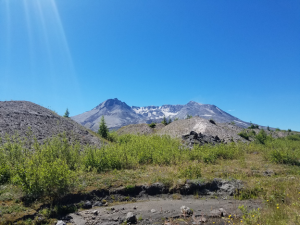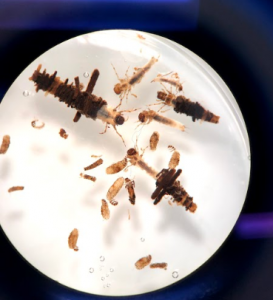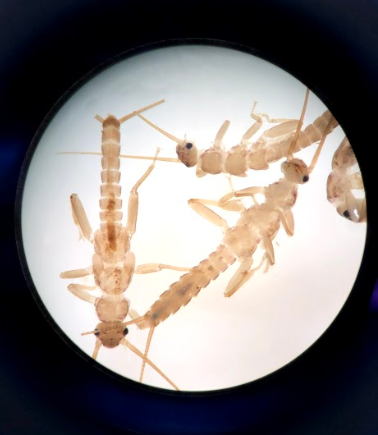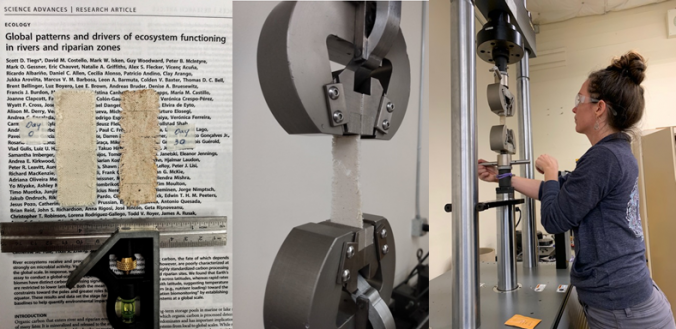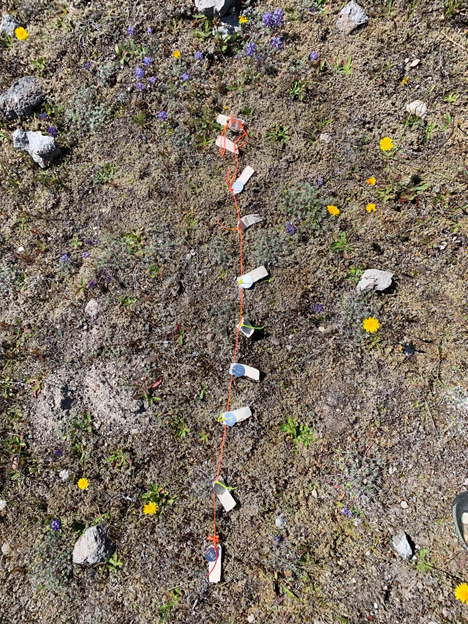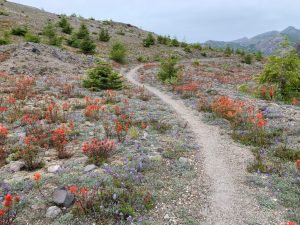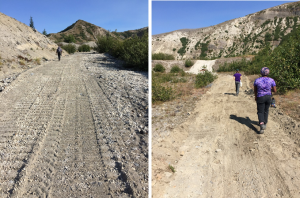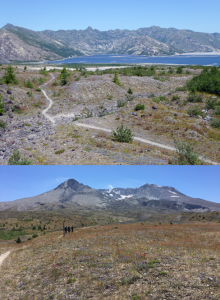What is one of those mind-blowing facts about MSH that you can’t un-know?: “I love how Mount St Helens was a completely sterile environment, then lupines showed up. The process of natural regeneration is amazing. It reminds me of the Big Bang Theory, life happening on its own.”
What attracted you to research at Mount St Helens? “Being outside, learning the fundamentals of stream ecology, and the roles of rivers and streams in larger landscape processes.”
What is your role in the L3 lab? “Bug master!” Angie has been leading the processing of 2 seasons x 3 harvests x 32 #litterbags = 192 litterbag communities. Aq. Insect abundances range from 25-100 per sample, so lots of bugs! Stay tuned for a blog highlighting pictures of some of the aquatic insects Angie’s documented!
Fav aquatic insect? “Caddisfly (Trichoptera). I like the variation in their cases. Caddisfly silk is being studied as a potential waterproof adhesive. That this natural polymer can inspire product engineering is really cool!”
Greatest challenge/area of growth? “Writing has been my greatest challenge. But I’ve learned a lot about keying insects and getting through peer-reviewed papers, getting through them faster, understanding terminology.”
Quirky facts about the L3 lab? “How we aren’t intimidated by each other. We get to troubleshoot things together. We have a lot of independence in our lab, so we get to ask each other all the silly questions!”
What are your future goals? “Finish sorting and identifying all the MSH 2019 litterbag samples, co-author a peer-reviewed paper on the leaf litter study, work with Dr. LeRoy to become a better scientific writer.”
Snacks: What lab member’s lunch are you most envious of in lab meetings? “Iris or Joy!” Who has the best field snacks? “Deb has the best junk food, but Carri’s sesame sticks are also a win.”
Do you identify as a Greener? “I do. I created my own path at Evergreen. It allowed me room to grow. I came to school for one thing, then my interests changed after working with science faculty. Now I’m weeks away from a BS Degree!







